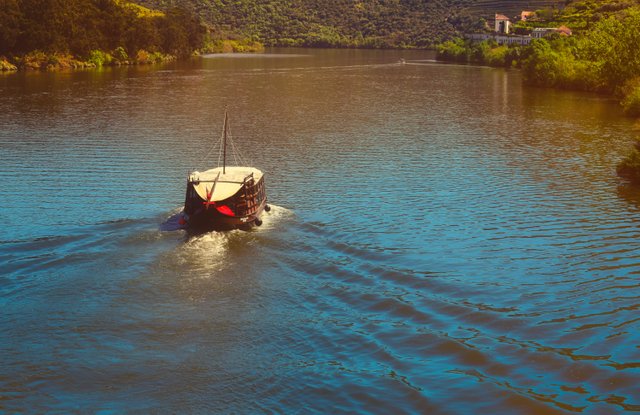📷Curiosities about the Azores Archipelago
Italy Community
✅ 1862 | The Legend of the CSS Alabama Passed Through the Azores Seas
In the 1860 U.S. presidential elections, the Republican candidate Abraham Lincoln was elected, and his political program included the abolition of slavery throughout the United States, which then included 34 states. However, while most Northern states remained loyal to the new president and the U.S. Constitution — becoming known as the Union or Unionists — several Southern states rejected the end of slavery and proclaimed themselves as the Confederate States of America, becoming known as the Confederacy or Confederates.
This rejection evolved into a revolt against the constitutional government of the United States, and both the Union and the Confederacy began to arm themselves, recruit volunteers, and form armies. The war began in April 1861 and lasted until 1865, becoming known as the American Civil War, or the War of Secession. Among other consequences, it led to the abolition of slavery and the liberation of more than four million Black slaves.
Although most military operations occurred on land with great violence, there were also naval confrontations. It is in this naval chapter of the Civil War that the legend of the Alabama is inscribed.
The Confederates adopted a strategy involving the formation of a Confederate Navy (the Confederate States Navy or CSN) to counter the Union blockade of Southern ports and disrupt their navigation and trade. Over the course of the war, the CSN gathered powerful naval assets and used submarines — one of which carried out the first sinking of a ship in combat.
Through one of its agents based in the United Kingdom, the Confederacy commissioned the construction of a ship at the John Laird Sons and Company shipyards in Birkenhead, on the left bank of the River Mersey across from Liverpool. This involved some complicity from the shipbuilder, as the British government had declared neutrality and did not support the Southern rebellion.
The construction was designated as No. 290 and was named Enrica, launched in May 1862. The design and construction followed military naval standards, with reinforced structures to later receive artillery and ammunition magazines. Before its true ownership was revealed, the Enrica evaded British authorities and, under the guise of sea trials, sailed away without returning to the shipyard, heading for the port of Praia on Terceira Island, under the command of Lieutenant John Low.
In international waters off the Bay of Praia, the Enrica received its new commander, Raphael Semmes — an experienced U.S. Navy officer — as well as other Confederate officers who had arrived a few days earlier from Liverpool.
On the morning of August 24, 1862, ship No. 290 began flying the Confederate flag, was christened as the CSS Alabama, and sailed to the Bay of Fanal, located west of Monte Brasil, in the western part of the city of Angra.
A few days earlier, the steamships Aggripina and Bahama had arrived on Terceira Island and also headed to the Bay of Fanal, maintaining close contact with the Alabama, likely to transfer cargo and complete its armament. The presence of these ships in the secluded Bay of Fanal and their decision not to report to port authorities raised suspicions, including in the local press.
"One of these steamships had been in the town of Praya, together with the said barque, and also refused to have any contact with the land. These events have given rise to much speculation, the most likely being that the arrival of these ships in our ports is not unrelated to the war between North and South America, since it was seen that while they were anchored, many crates presumed to be war supplies were passed from one to another, with some flying the English flag to carry out their speculation!"
The CSS Alabama completed its outfitting a few days later. It displaced 1,050 tons, measured 67 meters in length, and initially had a crew of 83 men, few of whom were American. Many were British sailors recruited by Commander Semmes from the civilian crews of the Enrica, Aggripina, and Bahama. It was a cruiser or armored corvette, with mixed propulsion — sailing and two steam engines.
The CSS Alabama immediately began operations in the Azorean seas.
In the short period between September 5 and 18, that legendary cruiser captured and burned, off the coast of Flores, the schooner Starlight (on the 7th), which was traveling from Horta to Boston, and also the whalers Ocmulgee (5th), Ocean Rover (8th), Alert (9th), Weather Gauge (9th), Altamaha (13th), Benjamin Tucker (14th), Courser (16th), Virginia (17th), and Elisha Dunbar (18th).
The Alabama then sailed to the seas of New England, the Gulf of Mexico, and the coasts of Brazil, continuing its privateering campaign against Union maritime interests. After crossing the South Atlantic, in September 1863 it entered the Indian Ocean and, for about six months, attacked Union ships, sailing as far as Malacca and the Java Sea, before returning to the Atlantic.
On June 11, 1864, the Alabama entered the French port of Cherbourg, seeking to clean its hull in a dry dock. Three days later, having received information about the Alabama's presence, the USS Kearsarge, commanded by John Ancrum Winslow, approached Cherbourg and waited.
On June 19, 1864, Commander Raphael Semmes decided to leave the port of Cherbourg and face the USS Kearsarge.
The battle lasted just over an hour and was unfavorable for the Alabama, as the Kearsarge's hull had additional protection that withstood the enemy fire. The Alabama was hit, threatened to sink, and under those conditions, Commander Semmes decided to send a boat with a request for surrender.
The Alabama had lost 9 men in combat, 10 by drowning, and had 21 wounded. The Kearsarge rescued most of the survivors, but 41 — including Commander Semmes — were rescued by the English yacht Deerhound, which was nearby and took them to England.
The legend of the Alabama had come to an end.
In total, it is estimated that it destroyed 65 Union ships, both military and merchant. However, the record of the Alabama shows that the crews and passengers it captured were never mistreated and were always placed in neutral ports or ships.
The Azores seas are a key reference in the history of the CSS Alabama — it was there that the ship was armed and commissioned into the Confederate Navy, that it began its operational activities near the Western Group islands, and where its crew included an Azorean sailor from Corvo Island.
Azorean curiosity about the Alabama was high, and for this reason, its sinking was reported in one of the newspapers of Angra do Heroísmo.
| Category | #italy |
| Photo taken at | Douro Valley - Portugal |
)


Upvoted! Thank you for supporting witness @jswit.
(crews and passengers it captured were never mistreated and were always placed in neutral ports or ships.)At least people are being considered, their well-being, so to speak, a detail that not many people consider.
I wish you a happy day
Awesome transcription! Hope you’re having a great week over there too. Cheers :)